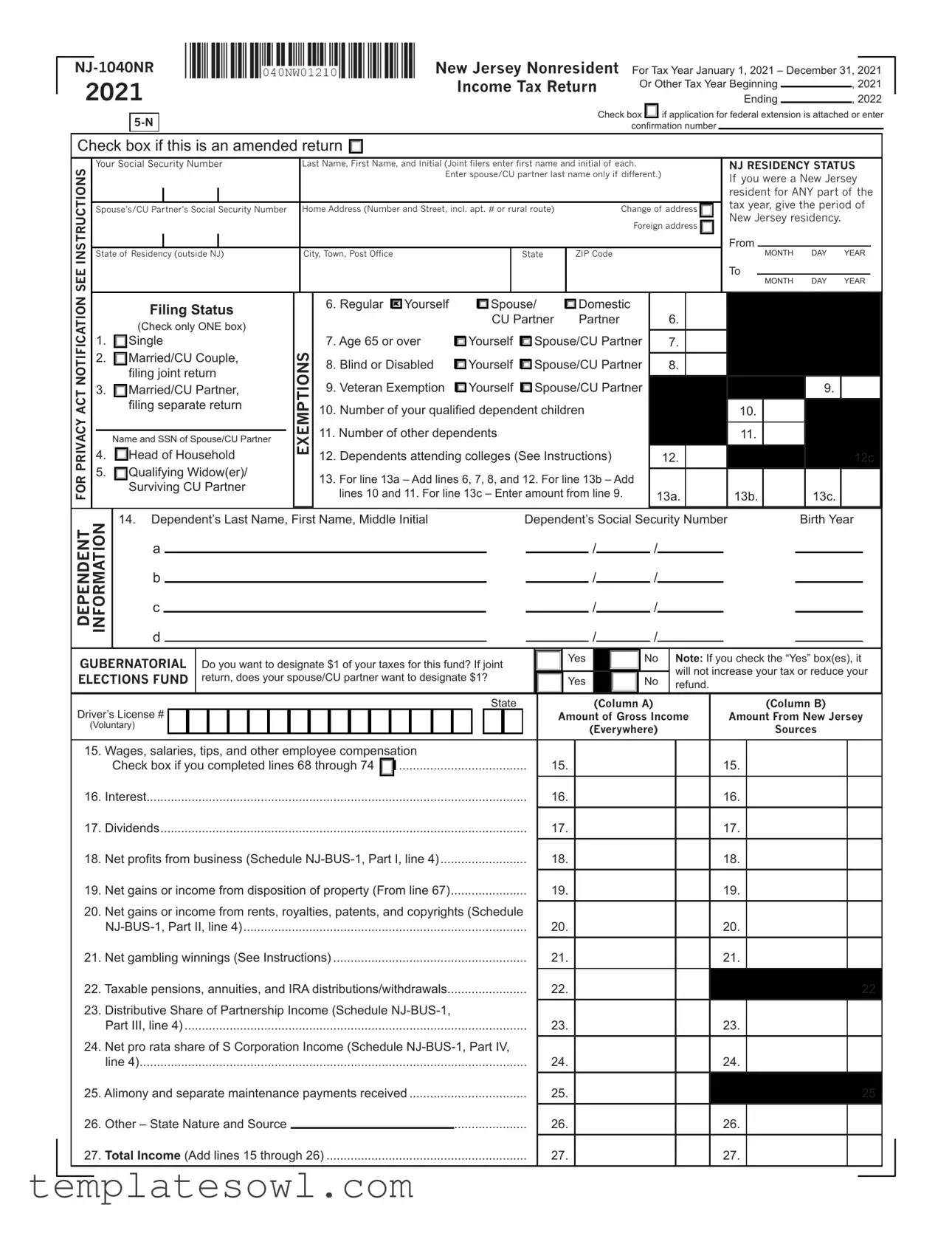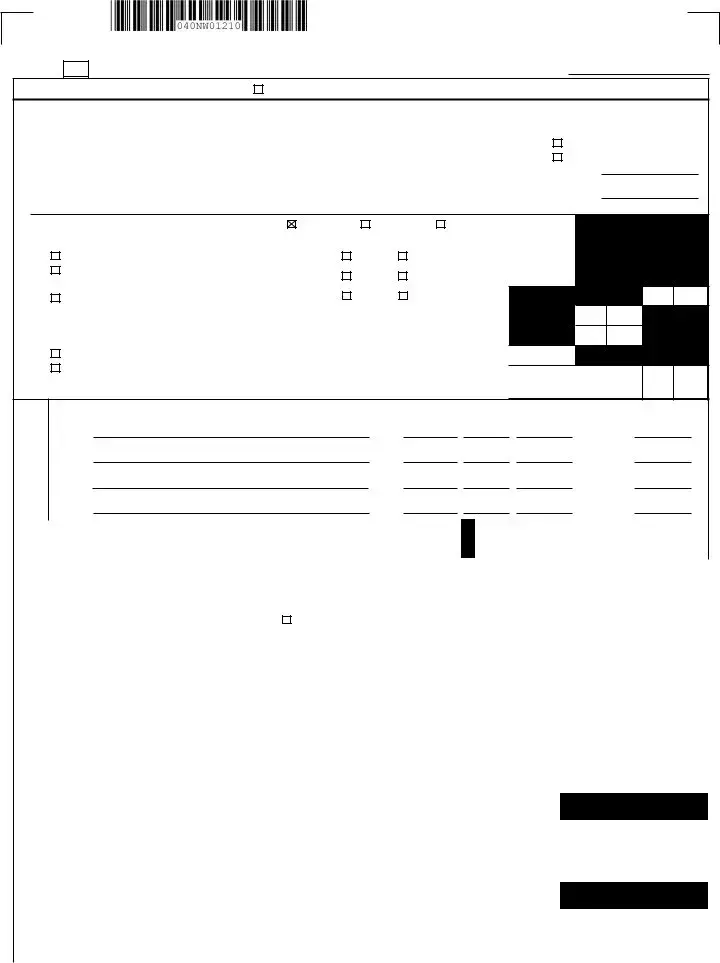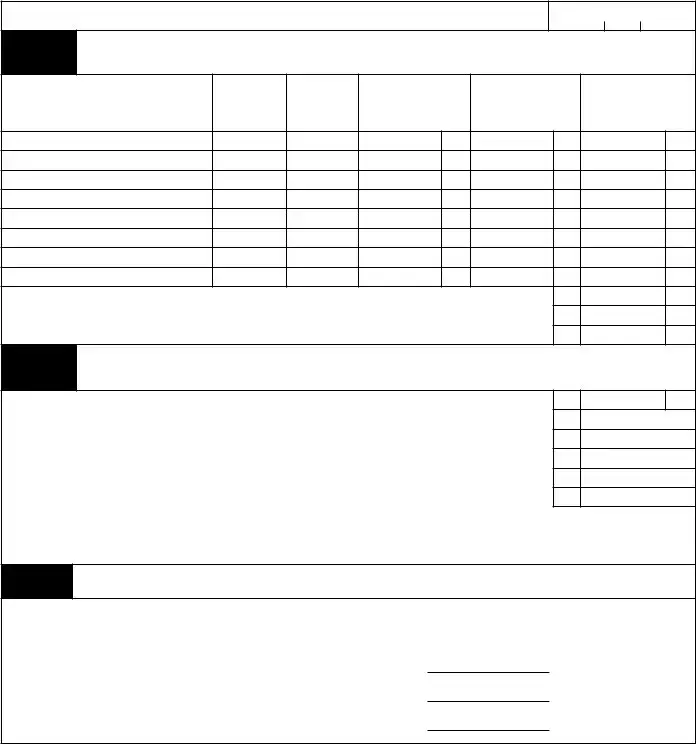|
|
|
|
|
|
|
|
|
|
|
|
|
|
|
|
|
|
|
|
|
..............................................................................................56. Total Payments/Credits (Add lines 49 through 55) |
|
|
|
|
|
|
56. |
|
|
|
|
57. If line 56 is less than line 48, you have tax due. |
|
|
|
|
|
|
|
|
|
|
|
|
|
Subtract line 56 from line 48 and enter the amount you owe |
|
|
|
|
|
57. |
|
|
|
|
|
If you owe tax, you can still make a donation on lines 60A through 60F. |
|
|
|
|
|
|
|
|
|
|
|
|
|
|
|
|
|
|
|
|
|
58. If line 56 is more than line 48, you have an overpayment. |
|
|
|
|
|
|
|
|
|
|
|
|
|
Subtract line 48 from line 56 and enter the overpayment |
|
|
|
|
|
|
58. |
|
|
|
|
59. Amount from line 58 you want to credit to your 2022 tax |
|
|
|
|
|
|
59. |
|
|
|
|
60. Amount you want to credit to: |
|
|
|
|
|
|
|
|
|
NOTE: |
|
|
|
|
|
|
|
|
|
An entry on lines 59 through |
|
(A) N.J. Endangered Wildlife Fund |
$10, |
$20, |
Other |
|
60A. |
|
|
|
60F will reduce your tax refund |
|
|
|
|
|
|
|
|
|
|
(B) N.J. Children’s Trust Fund |
$10, |
$20, |
Other |
|
60B. |
|
|
|
|
|
|
|
|
|
(C) N.J. Vietnam Veterans’ Memorial Fund |
$10, |
$20, |
Other |
|
60C. |
|
|
|
|
|
|
|
|
|
(D) N.J. Breast Cancer Research Fund |
$10, |
$20, |
Other |
|
60D. |
|
|
|
|
|
|
|
|
|
(E) U.S.S. N.J. Educational Museum Fund |
$10, |
$20, |
Other |
|
60E. |
|
|
|
|
|
|
|
|
|
(F) Designated Contribution |
|
|
|
$10, |
$20, |
Other |
|
60F. |
|
|
|
|
|
|
|
|
|
|
|
|
|
|
|
|
|
|
|
|
|
61. Total Adjustments to Tax Due/Overpayment (Add lines 59 through 60F) |
|
|
|
|
61. |
|
|
|
|
62. Balance due (If line 57 is more than zero, add line 57 and line 61) |
|
|
|
|
|
62. |
|
|
|
|
63. Refund amount (If line 58 is more than zero, subtract line 61 from line 58) |
|
|
|
|
63. |
|
|
|
|
|
Under penalties of perjury, I declare that I have examined this return, including accompanying schedules and statements, and to the best of my |
Pay amount on line 62 in |
|
knowledge and belief, it is true, correct, and complete. If prepared by a person other than taxpayer, this declaration is based on all information of |
full. Write Social Security |
|
which the preparer has any knowledge. |
|
|
|
|
|
|
|
|
|
number(s) on check or money |
|
|
|
|
|
|
|
|
|
|
|
|
|
|
|
|
order and make payable to: |
|
|
|
|
|
|
|
|
|
|
|
|
|
|
|
|
State of New Jersey – TGI |
HERE |
|
|
|
|
|
|
|
|
|
|
|
|
|
|
|
Division of Taxation |
|
|
|
|
|
|
|
|
|
|
|
|
|
|
|
Revenue Processing Center |
|
|
Your Signature |
Date |
Spouse’s/CU Partner’s Signature (if filing jointly, BOTH must sign) |
|
|
PO Box 244 |
|
|
|
|
If enclosing copy of death certificate for deceased taxpayer, check box (See instructions) |
|
|
|
|
|
|
|
|
|
|
|
Trenton, NJ 08646-0244 |
|
|
|
|
|
|
|
|
|
|
|
|
|
|
|
|
SIGN |
I authorize the Division of Taxation to discuss my return and enclosures with my preparer (below) |
You can also make a |
|
|
|
|
|
|
|
|
|
|
|
|
|
|
|
|
|
|
|
|
|
|
|
|
|
|
|
|
|
|
|
|
|
|
|
|
|
|
|
|
|
|
|
|
|
|
|
payment on our website: |
|
|
|
|
|
|
|
|
|
|
|
|
|
|
|
|
nj.gov/taxation. |
|
|
|
|
|
|
|
|
|
|
|
|
|
|
|
|
|
|
|
|
|
|
Paid Preparer’s Signature |
|
|
|
|
Federal Identification Number |
|
|
|
|
|
|
|
|
|
|
|
|
|
|
|
|
|
|
|
|
|
|
|
|
|
|
Firm’s name |
|
|
|
Firm’s Federal Employer Identification Number |
|
|
|
|
|
|
|
|
|
|
|
|
|
|
|
|
|
|
|
|
|
|
|
|
|
|




